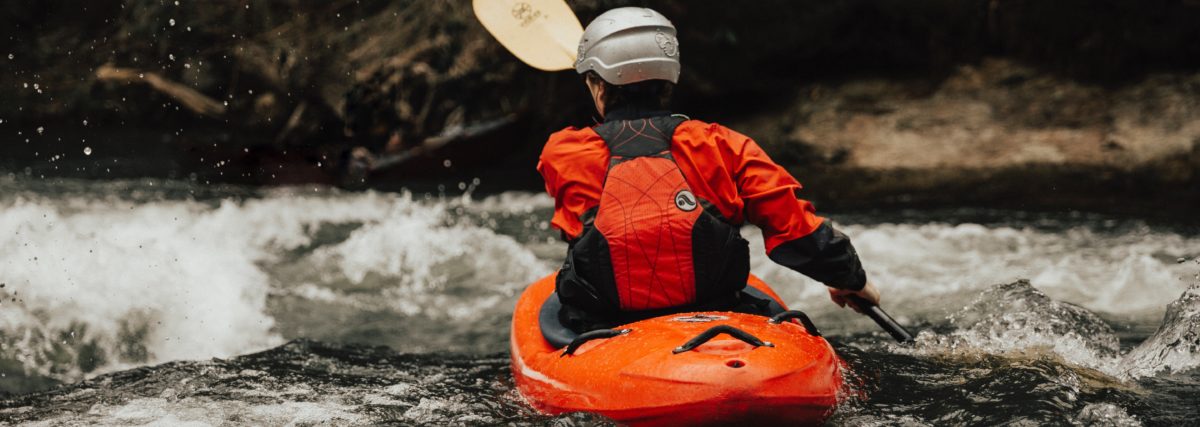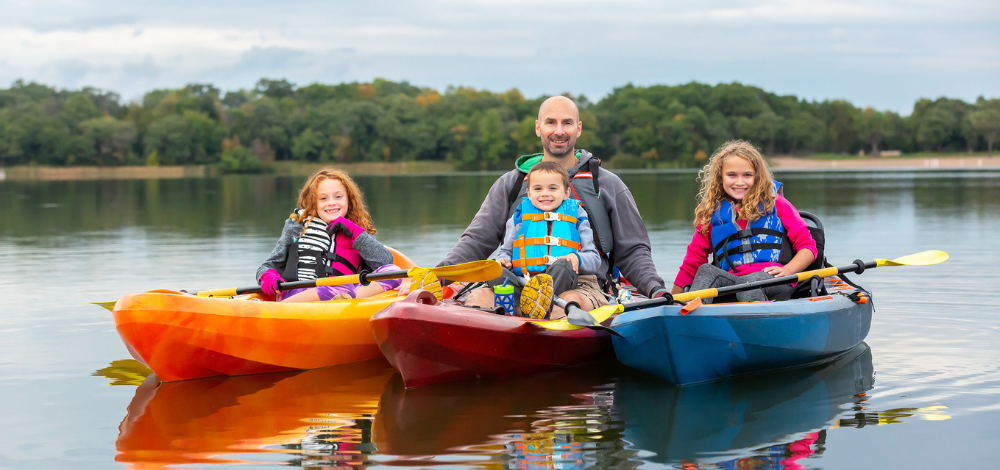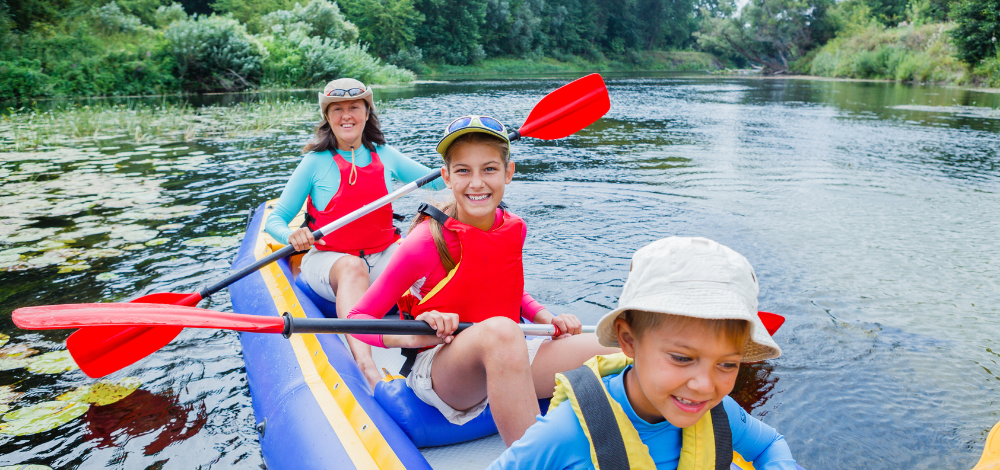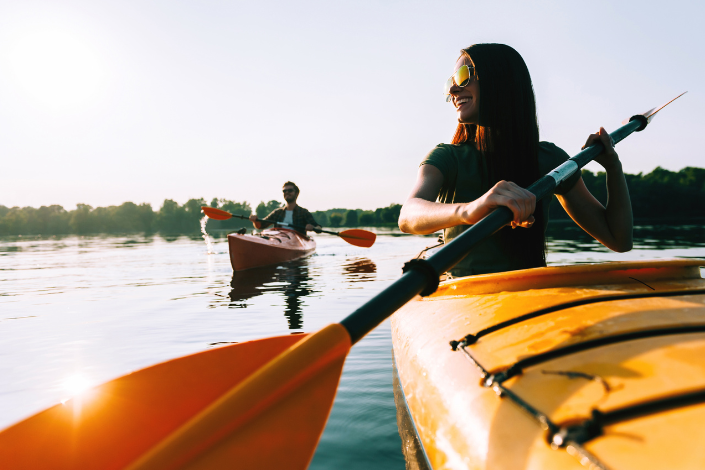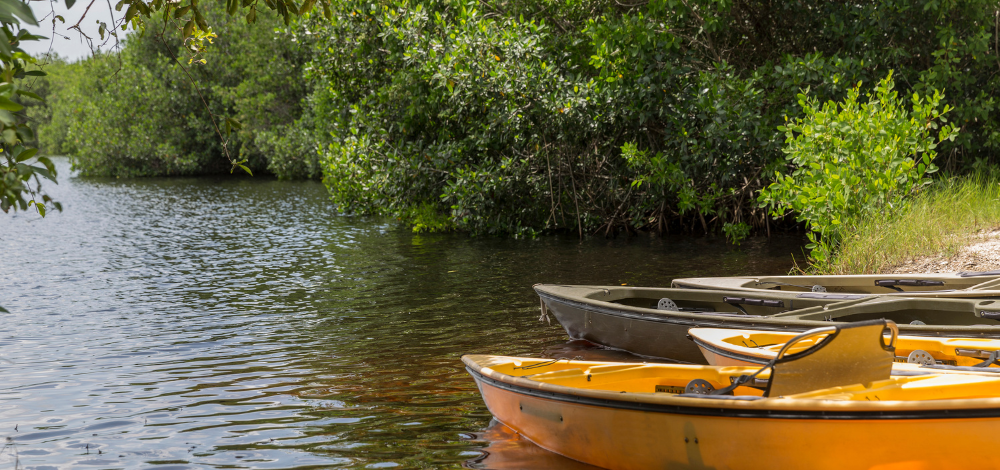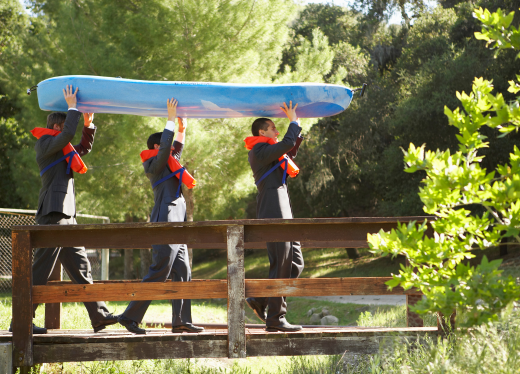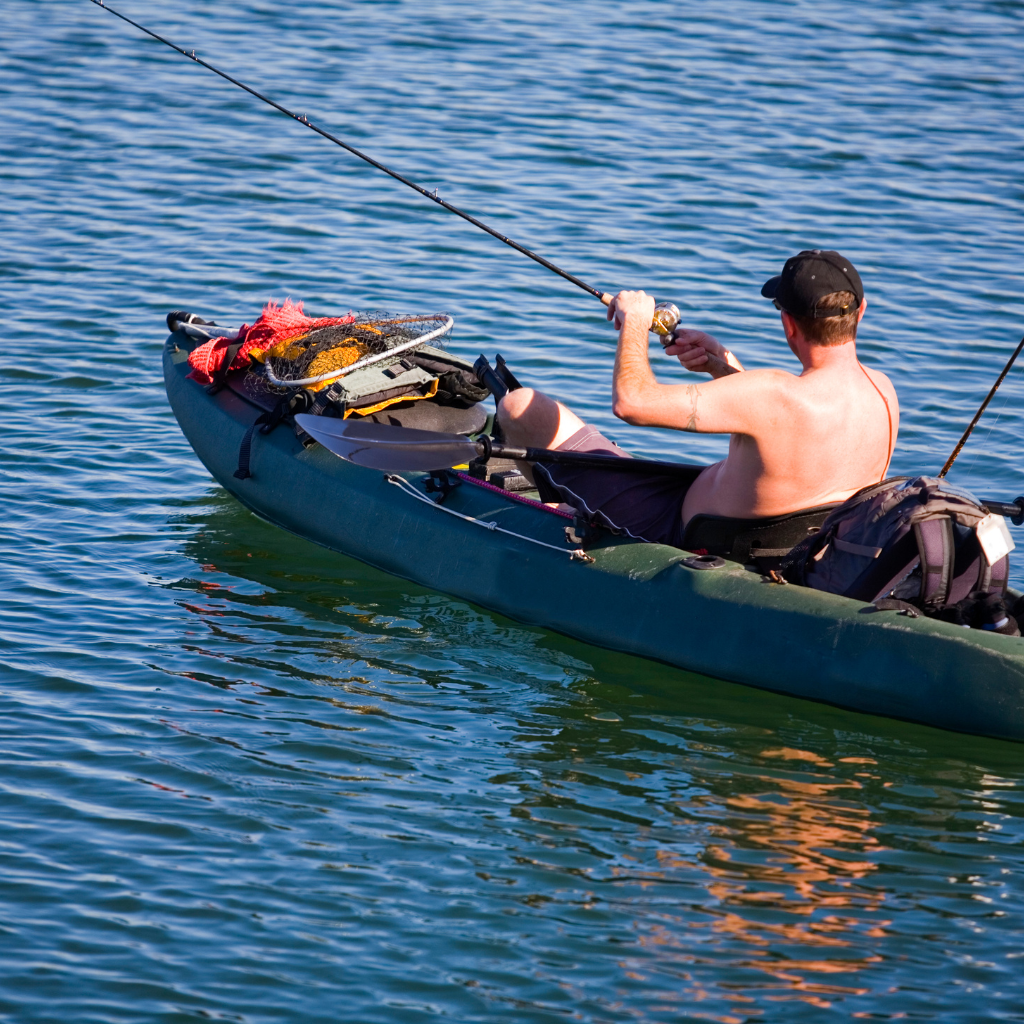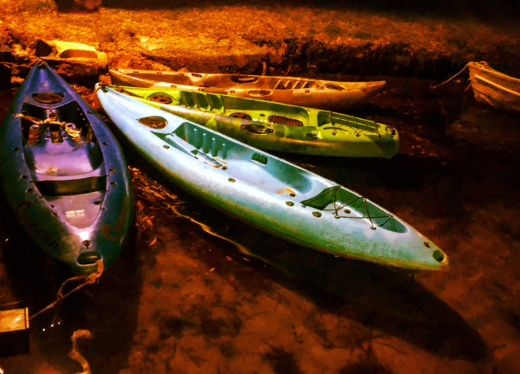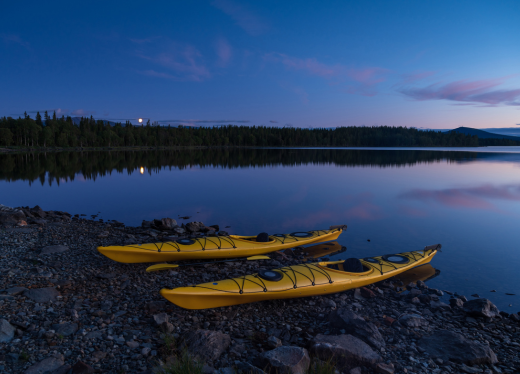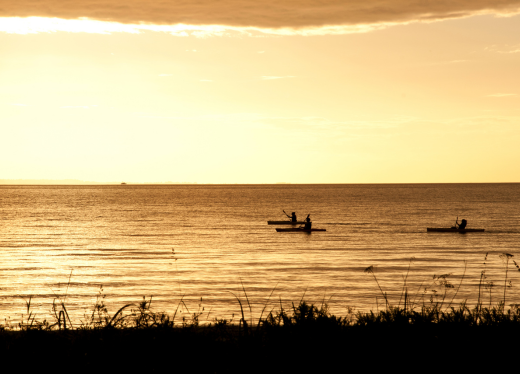Kayaking is a fun and exciting way to explore the outdoors, stay active, and enjoy nature’s beauty but damn, if you’re not in shape, you might be asking how many miles can you kayak within a day? Or perhaps it’s you’re getting in more shape so you’re researching what’s possible for you to accomplish.
Let’s dive in!
What’s the Average Someone Can Kayak Within a Day?
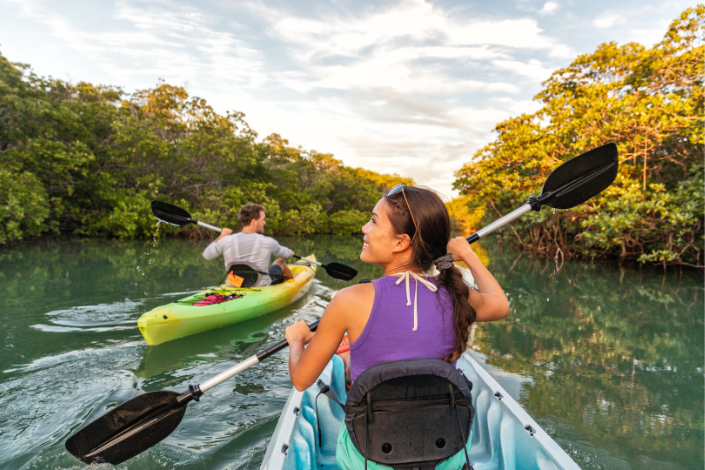
On average, most kayakers can cover a distance of about 10-20 miles in a day, but some experienced paddlers can go even further.
The longer answer is: the distance you can kayak in a day depends on various factors including your fitness level, experience, wind and weather conditions, and the type of kayak you’re using.
But if you’re a beginner, it’s best to start with shorter paddles and gradually build up your endurance and skills over time. It took me a good six months of kayaking to be able to do 5 miles without feeling winded so how much you can personally do will depend on your fitness level.
4 Tips To Help Maximize How Far You Can Kayak
There are a few things you can do to improve how far you can kayak. From personal experience, I can share these with you:
#1. Prepare Properly
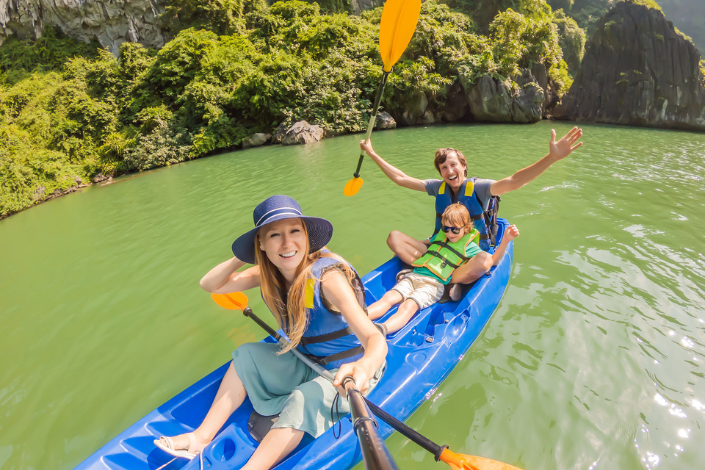
To maximize your kayaking distance, it’s essential to prepare properly beforehand.
Start by choosing the right type of kayak for the activity and conditions (time of day or at night) you’ll be kayaking in. For example, if you’re planning a long-distance trip on calm waters, a touring kayak with a sleek design and good tracking ability may be the best option.
Avoid using a recreational kayak as it can slow you down and make paddling more difficult (unless, obviously, you’re going for recreational purposes!)
#2. Consider Your Physical Condition

Another key factor to consider is your physical condition.
Try to maintain a good level of fitness, including regular cardio and strength training exercises to build up your endurance and upper body strength. You’ll also need to stay hydrated and well-nourished throughout your trip, so bring along enough food and water to keep yourself properly fueled.
When paddling long distances, it’s important to maintain good form and technique to avoid getting tired quickly or injuring yourself.
Always keep your back straight, your knees bent, and paddle with your core muscles, not just your arms. Take breaks periodically to stretch, rest, and hydrate, this can help you maintain stamina and avoid discomfort or cramps.
#3. Awareness of Weather Conditions
It’s extremely essential to be aware of weather conditions and plan accordingly to avoid unexpected challenges that could impact your distance.
Check weather forecasts and wind reports ahead of your trip and have a backup plan in case conditions change unexpectedly. It’s also a good idea to carry a map, compass, and GPS to help you stay on course.
Getting caught in bad weather unexpectedly is one of the worst things that can happen when you’re kayaking.
Can You Kayak 30 Miles in a Day?
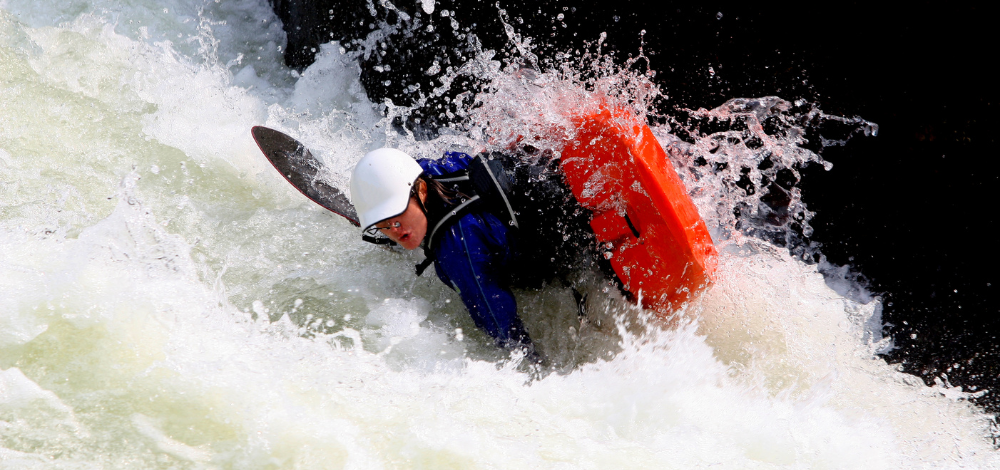
Depending on the conditions, most experienced kayakers should be able to cover a distance of 30 miles in a day.
However, it’s important to remember that each paddler is different and some may find this distance too challenging. It’s best to start with shorter trips and gradually increase the length as you gain experience and confidence.
Is Kayaking 10 Miles a Lot?
For experienced kayakers, 10 miles is not considered a lot and can usually be achieved in a single day.
However, for beginners, this may be too much of a challenge and it’s best to start with shorter trips before attempting longer distances.
How Long Does it Take to Kayak a Mile?
Most experienced paddlers can cover a mile in about 15-20 minutes, depending on the conditions. Beginners may take longer and should allow for extra time to make sure they reach their destination safely.
What is the Most Miles Kayaked in a Day?
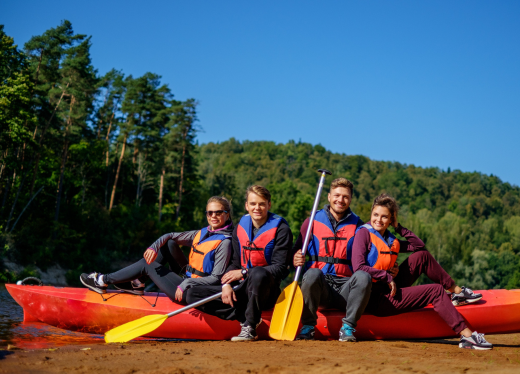
The most miles kayaked in a day is an impressive 84.55 miles, accomplished by Adam Kreek and his team during their 24-hour non-stop circumnavigation of Vancouver Island in 2010.
How Many Miles Can You Kayak in 3 Hours?
Most experienced kayakers should be able to cover 6-8 miles in 3 hours, depending on the conditions. Beginners may find this distance challenging and it’s best to start with shorter trips before attempting longer distances.
Conclusion
If you’re new to the sport, it’s essential to understand the limitations of your body and equipment so that you can plan your trips effectively and stay safe.
When I started off kayaking, I was 50 lbs overweight and would get winded fast; it took my six months to drop some weight and cover 5 miles without being out of breath. You can build up the same way!
With the right preparation, conditioning, equipment, and technique, you can cover an impressive distance on the water and enjoy all the beauty and serenity of this incredible activity.
Whether you’re paddling for an hour or an entire day, take time to enjoy the sights, sounds, and sensations of kayaking and create unforgettable memories along the way. Now go row, row, row your boat, gently down the stream… merrily merrily merrily…!
